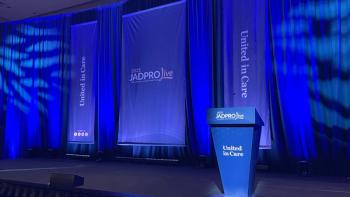
The Effects of Breast Cancer Surgery on Elderly Women in Nursing Homes
Elderly women living in nursing homes who were diagnosed with breast cancer may face a greater chance of death compared with their non-resident peers–despite what, for many in other age groups, is routine surgery. Therefore, the decision to perform breast cancer surgery must lie with the patient, family, and her physician.
Elderly women living in nursing homes who were diagnosed with breast cancer may face a greater chance of death compared with their non-resident peers—despite what, for many in other age groups, is routine surgery. Therefore, the decision to perform breast cancer surgery must lie with the patient, family, and her physician.
High Mortality Rates
A recent study published in JAMA Surgery reviewed data from 5969 women aged 67 or older (mean age, 82 years) with breast cancer who lived in nursing homes at the time of their surgeries. Overall, 11.2% of women had lumpectomies, 27.5% had mastectomies, and 61.3% had lumpectomies or mastectomies with axillary lymph node dissection (ALND).1
The 1-month mortality rates were 8% for those who underwent a lumpectomy, 4% in women who had a mastectomy, and 2% in those who also had ALND. Following a full year of follow-up, the death rates rose precipitously, to 41%, 30%, and 29%, respectively.
Surprisingly, the researchers also found that lumpectomies, which were recommended for patients that were not considered to be in good health, resulted in the highest mortality, despite being the least invasive surgery.
Decline in Activity, Mobility
Breast cancer surgery—the most common type of cancer operation performed on nursing home residents–always comes with some risk of functional decline. In general, more than a third of middle-aged patients have issues with mobility after their breast cancer surgeries. In the study, more than half of patients who were still alive 1 year after surgery reported functional decline in activities of daily living (ADL), such as putting on and taking off one’s clothes, feeding oneself, going to the bathroom, basic hygiene, moving around in bed, moving from one location to another, and walking.
In the hospital setting, preop clearance is usually done after the age of 40. In the nursing home, these patients already had a prior history of diabetes, arthritis, heart failure, and cerebrovascular accident, and their ability to function on a day-to-day basis was already compromised. The study also revealed that more than half of patients already had brain as well as functional decline prior to surgery. This shows that breast cancer surgery, although common in this setting, comes with some risk.
Alternative Therapies​​​​​​​
Since surgery may lead to increased risk for mortality among women diagnosed with breast cancer in nursing homes, it is important to determine which alternative therapies there are. In this age group, chemotherapy is a controversial subject and comes with its own risks, which is why it is not prescribed that often.
Meanwhile, the use of endocrine therapy for estrogen receptor (ER)-positive tumors has been suggested in this age group; for example, Tamoxifen is one of the primary treatments most commonly used in breast cancer.2 Aromatase inhibitors (AIs), like anastrozole (Arimidex) could also be given. Lastly, radiation is another modality that can be used.
To Mammogram or Not
On a personal note, I have seen breast cancer surgeons decline to do mammograms on wheelchair-bound patients with neurological disorders, and these patients were also deemed too high risk for surgery because it might precipitate further neurological problems like a stroke or a cardiac event like an myocardial infarction.
Therefore, a manual exam to palpate for masses was all that was done. I should note, these surgeons had the United States Preventive Services Task Force (USPSTF) to back them up: Mammograms are not recommended in women over age 75 because there is not enough proof to show they do actual good versus their possible risk to these women.2
However, nurses can refer to a decision-making tool, developed by Mara Schonberg, MD, MPH, from Beth Israel Deaconess Medical Center in Boston. The tool is available in the form of a brochure/questionnaire regarding this very topic for women over 75, and explains the actual breast cancer risk to a woman to help her evaluate if it is a worthwhile idea to keep on getting mammograms.3
The decision to perform breast cancer surgery must lie with the patient, family, and her physician. All factors must be considered, including pre-existing physical as well as cognitive problems. Only then can an informed decision be made.
References
- Tang V, Zhao S, Boscardin J, et al. Functional status and survival after breast cancer surgery in nursing home residents. JAMA Surg. 2018;doi:10.1001/jamasurg.2018.2736.
- Breast cancer: Screening. US Preventive Services Task Force website. https://www.uspreventiveservicestaskforce.org/Page/Document/RecommendationStatementFinal/breast-cancer-screening. Updated February 2018. Accessed Nov. 6, 2018.
- For elderly women with breast cancer, surgery may not be the best option. The New York Times website. nytimes.com/2018/09/14/health/breast-cancer-surgery-elderly.html Published Sept. 14, 2018. Accessed Sept. 14, 2018.
Newsletter
Knowledge is power. Don’t miss the most recent breakthroughs in cancer care.

















































































